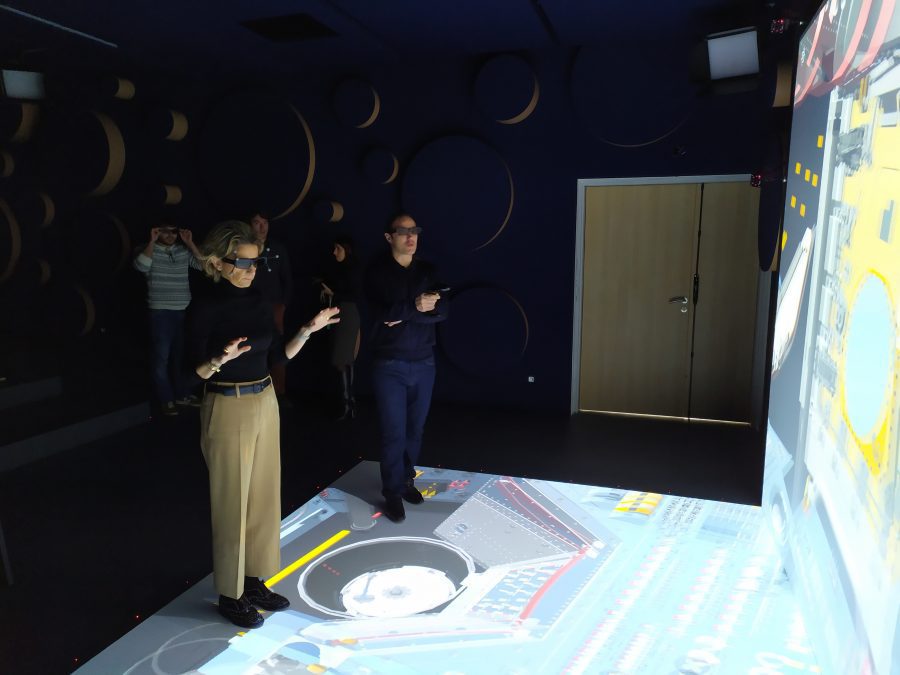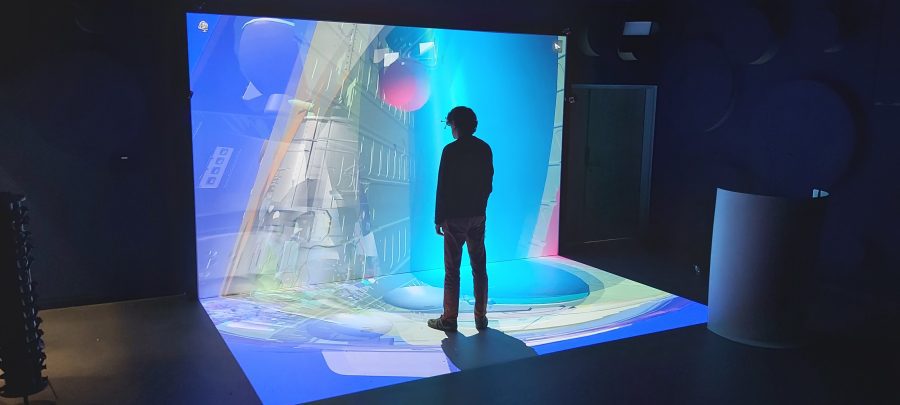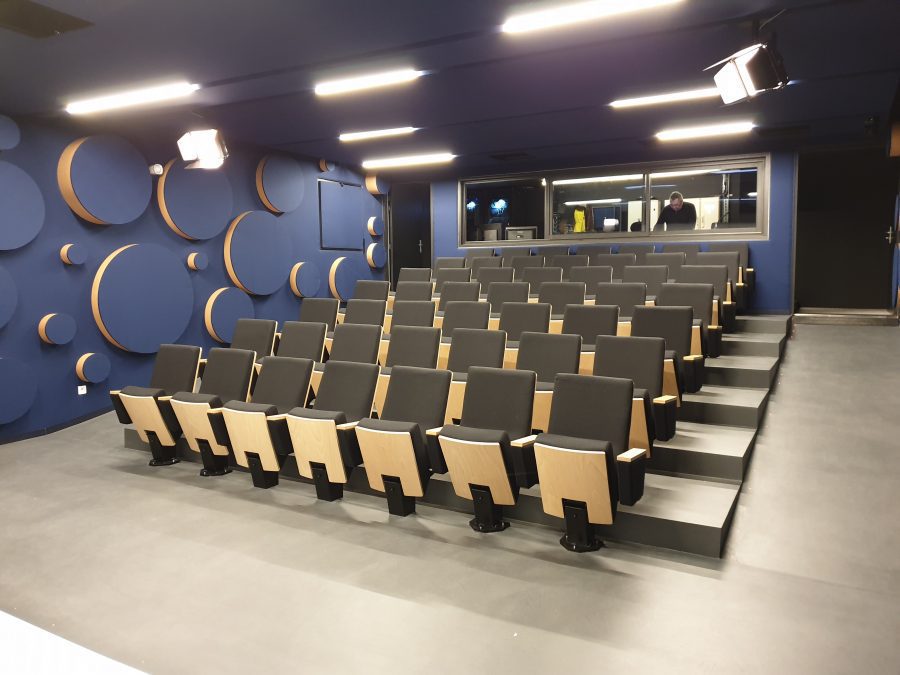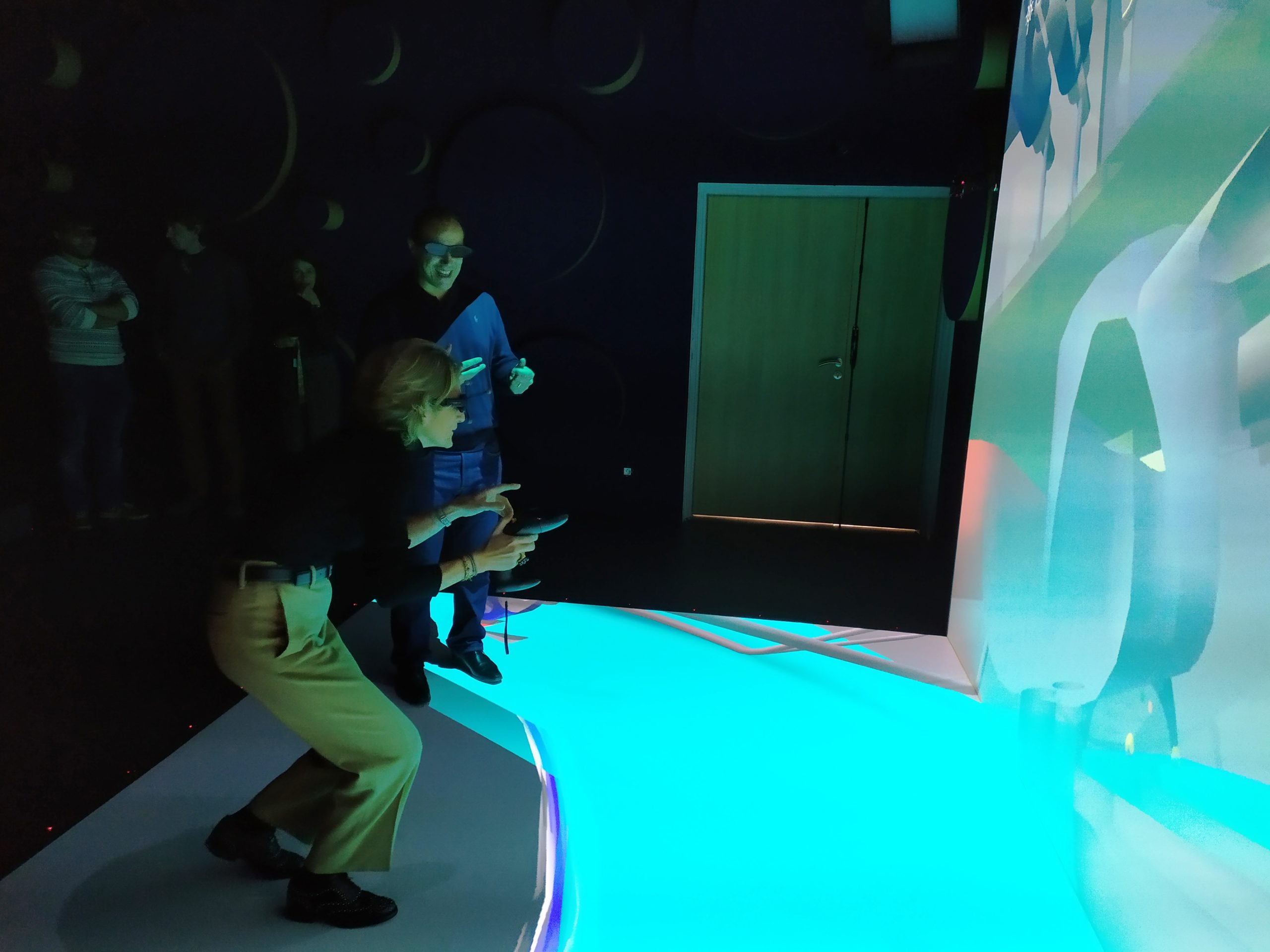Paris (France), 6th January 2020 – Ideally situated in Corte, in the heart of Corsica, the UMR 6240 LISA is a mixed research unit. The main goal of the unit is to study society’s relationship with nature. It is under the joint leadership of the CNRS (French National Centre for Scientific Research) and the University of Corsica Pasquale Paoli, which has a total of 4,700 students.
In order to address issues linked to the analysis of territorial restructuring over time and modelling for space operations, the UMR LISA unit has been recently equipped with a new next-generation immersive room. Named VIRTUAL CORSICA, this room will be the launch pad for new projects between the university’s different teams and departments, as well as with the local community, schools and even organisations.
Marie Antoinette Maupertuis, university professor, head of the UMR CNRS 6240 LISA unit and the VIRTUAL CORSICA science project lead, explains: “We were looking for a system with next-generation modelling and simulation capabilities. This virtual-reality 3D scientific modelling and simulation equipment will allow us to progress in our research projects, but also share and spread this knowledge with public decision-makers, planners, students and other members of the public. This is an impressive cultural and linguistic immersive room!”
Designed and delivered by Antycip, this two-sided L-shaped CAVE (Cave Automatic Virtual Environment) type room is equipped with two Christie Mirage WU14K-M projectors connected to an angled lens with high-tech direct projection.
As the environment did not cater for back-projection technology resources, the Antycip teams had to, in effect, come up with a design that would avoid any shadowing and also ensure the room’s excellent visual appearance.
In addition to the high technical level associated with this design, the French designer also provided all the room’s mechanics as well as the tracking equipment and produced a custom-made resin screen through its partner. Techviz software is responsible for tracking and managing the content provided by the university in order to use it in 3D.
Johan Besnainou, head of ST Engineering Antycip France and Spain, notes: “An immersive and collaborative room associated with spatial-sound and video-conference facilities makes this project truly unique in Europe.”
To carry out this project, Antycip has worked closely with Serge Marty, scenographer, project manager and designer of the room’s layout. He explains: “This room had to be an audio-visual multi-purpose research, creation and exchange tool, equipped with virtual reality, video-conference facilities and 3D projection. The main challenge here was to connect the immersive sound to the image in order to create an audio and acoustic environment in line with the university’s ambitions.”
Antycip, in charge of this project, has worked with its two partners: the Dushow Group, responsible for the conference and room management (mainly speakers and lighting), and Euphonia, which supplied its CATT-acoustic software for the spatial-sound.
This collaborative room is of significant importance in the field of interdisciplinary research, explains Marie Antoinette Maupertuis: “This tool will not only allow our researchers to collaborate between themselves but also with members of the local community and public decision-makers, primarily to address issues linked to urbanisation and heritage tourism. This immersive room can also be used to test and present the impacts of certain scenarios in a setting replicating real conditions.”
This device will also allow students to view complex concepts and immerse themselves in all kinds of visual and audio environments, thus enhancing their involvement and creativity.

“We have organised exchanges with our colleagues at VIRTUAL SHANGHAI, ARCHEOVISION and the Laboratory for Digital Culture at the University of Pisa. VIRTUAL CORSICA offers an opening into the sizeable world of Corsica’s island and mountain territory,” states Marie Antoinette Maupertuis.
According to Serge Marty, it is the homogeneity between a sound image and a 3D or immersive projection that makes this a one-of-a-kind device: “It was important to free the user of technical constraints, so I investigated all the technological tools available to set up the room for the benefit of researchers.”
The scenographer particularly appreciated the integration work carried out by Antycip, and the designer’s ability to listen. “The stakeholders working together on this project have been able to take control of the LISA room together in order to meet all expectations.”

A view shared by Marie Antoinette Maupertuis, who also paid tribute to the ability of all project participants to adapt. “The end result perfectly meets all our initial expectations, and we are proud to be able to use this visually stunning high-performance room.” Before concluding that: “This work allows the University of Corsica to benefit from the unique and high-performing 3D and virtual-reality modelling and simulation equipment. On top of the new research and innovative educational activities, this equipment represents an attractive feature for the recruitment of new researchers and students.”
“We are proud to be able to use all our expertise in undertaking this project”, states Johan Besnainou. “Personally, I really enjoyed working alongside Serge Marty, and I would like to thank him for his readiness, as well as UMR LISA for entrusting us with the creation of this unique immersive room.”





















